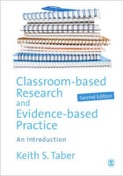Educational Research Methods

A site to support teaching and learning...

Interview data
Interview data is usually collected as an audio recording of the talk. Video recording may also sometimes be used. In some circumstances, recording devices cannot be used, and notes are taken instead. Due to the limitations of note taking, this is not used* where recording is possible (and should be justified as a research choice in any report of the research).
Interview data is usually converted into transcripts* of the recordings - a verbatim report of the conversation showing who said what. In some kinds of research the transcripts may also include such features as pauses, speech inflections (changes in pitch and tone) and accompanying gestures.
There is no such thing as a perfect transcription, as decisions about what to include, and how to represent spoken language in a written text have to be made (e.g. how should a mispronounced word be recorded?) Decisions about how to transcribe will depend upon the kind of data analysis needed to answer research questions in a particular study.
Examples of interview transcripts
* An exception is structured interviewing where pre-determined response categories are used, as the intention to to produce quantitive data such as frequency counts, that can be subjected directly to quantitative analysis.
This is a personal site of Keith S. Taber to support teaching of educational research methods.
(Dr Keith Taber is Professor of Science Education at the University of Cambridge.)
